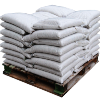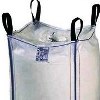| Aadhunik Industries is a manufacturing group company. Aadhunik Industries is pioneer manufacturers of Specialty Chemicals, Pharmaceutical Excipients, Food Fragrance & Flavor chemicals in India. It has toll manufacturers and representatives in UAE, Europe, Canada & USA and agents & customers in all countries like USA, Canada, Europe, UAE Dubai, South Africa, Tanzania, Kenya, Egypt, Nigeria, Uganda, Turkey, Mexico, Brazil, Chile, Argentina, Malaysia, Indonesia, Thailand, Korea, Japan, etc. Halal & Kosher certified Aluminum Sulfate or Aluminium Sulphate Manufacturers made in a FDA-GMP plant is offered. |
| The units have one or more of the certifications like FDA GMP, ISO 9001, ISO 22000, HACCP, REACH, Kosher & Halal and DMF support is available. |





Aluminum Sulfate or Aluminium Sulphate SDS of Manufacturers
Aluminum Sulfate or Aluminium Sulphate SDS Safety Data Sheet
MSDS Sheet; Material Safety Data Sheet
1. Product Identification
Product Name & Other Names : Aluminum Sulfate or Aluminium Sulphate or Sulfuric acid, aluminum salt (3:2), octadecahydrate or Cake alum or Patent alum.
CAS No.: 10043-01-3 (Anhydrous) 7784-31-8 (Octadecahydrate)
EINECS EC Number: 233-135-0
Molecular Weight: 666.44 (Octadecahydrate)
Chemical Formula: Al2(SO4)3-18H2O
Relevant uses and uses advised against (if any): Industrial Manufacturing.
2. Hazards Identification
GHS, Globally Harmonized System Classification in accordance with 29 CFR 1910
Classification according to Regulation (EC) No 1272/2008:
Skin corrosion/irritation Category 1A, B, C, H314
Specific target organ toxicity – repeated exposure, Oral Category 2, H373
Hazardous to the aquatic environment, acute hazard Category 3, H402
Labeling according to GHS & Regulation (EC) No 1272/2008
GHS Label Elements  Health Hazard |
GHS Label Elements |
Signal Words: Danger
Hazard statements:
H314: Causes severe skin burns and eye damage.
H373: Causes damage to organs through prolonged or repeated exposure.
H402: Harmful to aquatic life.
Precautionary statements:
P260: Do not breathe dust/fume/gas/mist/vapors/spray.
P261: Avoid breathing dust/ fume/ gas/ mist/ vapors/ spray.
P262: Do not get in eyes, on skin, or on clothing.
P264 Wash skin thoroughly after handling.
P270: Do not eat, drink or smoke when using this product.
P273: Avoid release to the environment.
P280: Wear protective gloves/protective clothing/eye protection/face protection.
P303 + P361 + P352 IF ON SKIN (or hair): Remove/Take off immediately all contaminated clothing. Wash with plenty of soap and water.
P304 + P340 IF INHALED: Remove person to fresh air and keep comfortable for breathing.
P305+P351+P338: IF IN EYES: Rinse cautiously with water for several minutes. Remove contact lenses, if present and easy to do. Continue rinsing.
P314: Get Medical advice/attention if you feel unwell.
P337+P313: If eye irritation persists: Get medical advice/ attention.
P501: Dispose of contents/ container to an approved waste disposal plant.
Classification according to EU Directives 67/548/EEC or 1999/45/EC:
Hazard Symbol:
C Corrosive
Xn Harmful
Risk Phrase:
R34 Causes Burns
R41 Risk of serious damage to eyes.
R48 Danger of serious damage to health by prolonged exposure
R52 Harmful to aquatic organisms.
3. Composition/Information on Ingredients
Product Name & Other Names: Aluminum Sulfate or Aluminium Sulphate or Sulfuric acid, aluminum salt (3:2), octadecahydrate or Cake alum or Patent alum.
CAS No.: 10043-01-3 (Anhydrous) 7784-31-8 (Octadecahydrate)
EINECS EC Number: 233-135-0
4. First Aid Measures
Inhalation: If inhaled, remove to fresh air. If not breathing, give artificial respiration. If breathing is difficult, give oxygen. Get medical attention.
Ingestion: If swallowed, DO NOT INDUCE VOMITING. Give large quantities of water. Never give anything by mouth to an unconscious person. Get medical attention immediately.
Skin Contact: Wipe off excess material from skin then immediately flush skin with plenty of water for at least 15 minutes. Remove contaminated clothing and shoes. Get medical attention. Wash clothing before reuse. Thoroughly clean shoes before reuse.
Eye Contact: Check for and remove any contact lenses. In case of contact, immediately flush eyes with plenty of water for at least 15 minutes. Cold water may be used. Get medical attention.
5. Fire Fighting Measures
Fire: Not considered to be a fire hazard.
Fire Extinguishing Media: Keep in mind that addition of water can cause the formation of sulfuric acid.
Hazardous Combustion Products: Forms aluminum oxide, sulfur dioxide and/or sulfur trioxide at temperatures above 760C (1400F) or when dry alum is encompassed in a fire involving other burning materials.
Special Information: In the event of a fire, wear full protective clothing and NIOSH-approved self-contained breathing apparatus with full face piece operated in the pressure demand or other positive pressure mode. At high temperatures under fire conditions, it may produce toxic or irritating fumes. Fire-extinguishing work is done from the windward and the suitable fire-extinguishing method according to the surrounding situation is used. Uninvolved persons should evacuate to a safe place.
6. Accidental Release Measures
Personal precautions, protective equipment, and emergency procedures: Ventilate area of leak or spill. Avoid breathing dust/fumes/gas/mist/vapors/spray. Use individual protective equipment (waterproof boots, suitable protective clothing, safety glasses, etc.). Restrict unprotected personnel from the area. Prevent any contact with hot surfaces. Do not approach facing the wind. Do not touch the spilled material.
Environmental precautions: Do not let the product enter drains, soil, or water sources.
Methods and materials used for containment Cleanup procedures and Storage:
Small Spill: Use appropriate tools to put the spilled solid in a convenient waste disposal container. Finish cleaning by spreading water on the contaminated surface and dispose of according to authority requirements.
Large Spill: Contain spilled material. Cover with an inert, non-combustible absorbent material, (e.g. sand, earth, diatomaceous earth, vermiculite). Vacuum or sweep-up and remove to an approved disposal container. Finish cleaning by spreading water on the contaminated surface and drain as per legal requirement.
7. Handling and Storage
Precautions for safe handling: Apply according to good manufacturing and industrial hygiene practices. Ensure proper ventilation. In case of insufficient ventilation, wear suitable respiratory equipment. Wash thoroughly after handling. Do not drink, eat, or smoke while handling. Avoid contact with skin, eyes, and clothing. Minimize dust generation. Avoid breathing dust/fumes/gas/mist/vapors/spray. Avoid contact with eyes, skin, and clothing. Keep container tightly closed. Avoid ingestion and inhalation. Use individual protective equipment (waterproof boots, suitable protective clothing, safety glasses, etc.). Prevent any contact with hot surfaces.
Conditions for safe storage, including any incompatibilities: Store in cool, dry, and ventilated area away from heat sources and protected from sunlight in tightly closed original container. Keep air contact to a minimum. Store protected from heat, sparks and ignition sources and incompatible materials. Avoid contact with skin and eyes. Avoid inhalation of dust/mist/vapor. Do not store with incompatible materials like strong oxidizing agents and water. Avoid moisture. It becomes a safety hazard when spilled because it absorbs moisture and becomes slippery.
8. Exposure Controls/Personal Protection
Airborne Exposure Limits:
-OSHA Permissible Exposure Limit (PEL):
15 mg/m3 (TWA) total dust and 5 mg/m3 (TWA)
respirable fraction for Aluminum metal as Al.
-ACGIH Threshold Limit Value (TLV):
1 mg/m3 respirable fraction (TWA), Aluminum metal and Insoluble compounds, A4.
Ventilation System: A system of local and/or general exhaust is recommended to keep employee exposures below the Airborne Exposure Limits. Local exhaust ventilation is generally preferred because it can control the emissions of the contaminant at its source, preventing dispersion of it into the general work area. Please refer to the ACGIH document, Industrial Ventilation, A Manual of Recommended Practices, most recent edition, for details.
Personal Respirators (NIOSH Approved): If the exposure limit is exceeded and engineering controls are not feasible, a half face piece particulate respirator (NIOSH type N95 or better filters) may be worn for up to ten times the exposure limit or the maximum use concentration specified by the appropriate regulatory agency or respirator supplier, whichever is lowest. A full-face piece particulate respirator (NIOSH type N100 filters) may be worn up to 50 times the exposure limit, or the maximum use concentration specified by the appropriate regulatory agency, or respirator supplier, whichever is lowest. If oil particles (e.g. lubricants, cutting fluids, glycerin, etc.) are present, use a NIOSH type R or P filter. For emergencies or instances where the exposure levels are not known, use a full-face piece positive-pressure, air-supplied respirator. WARNING: Air-purifying respirators do not protect workers in oxygen-deficient atmospheres.
Skin Protection: Wear impervious protective clothing, including boots, gloves, lab coat, apron or coveralls, as appropriate, to prevent skin contact.
Eye Protection: Use chemical safety goggles and/or full face shield where dusting or splashing of solutions is possible. Maintain eye wash fountain and quick-drench facilities in work area.
9. Physical and Chemical Properties
Appearance: Colorless crystals.
Odor: Odorless.
Odor threshold: Not available.
pH: 2-4.
Relative density: 1.3 to 1.7 depending on hydration level.
Melting Point: 87C (189F) Decomposes.
Initial boiling point and boiling range: Not available.
Flash point: Not available.
Auto-ignition temperature: Not available.
Decomposition temperature: Not available.
Upper/lower flammability or explosive limits: Not available.
Vapor pressure: Not available.
Vapor density: Not available.
Evaporation rate: Not available.
Flammability (solid, gas): Not available.
Partition coefficient: n-octanol/water: Not available.
Solubility: 87 g/100 cc water @ 0C (32F).
Viscosity: Not available.
10. Stability and Reactivity
Stability: Stable under ordinary conditions of use and storage.
Hazardous Decomposition Products: Toxic and corrosive oxides of sulfur may be formed.
Hazardous Polymerization: Will not occur.
Incompatibilities: Strong oxidizing agents. Corrosive to metals in the presence of water.
Conditions to Avoid: Heat, Moisture, and incompatibles.
11. Toxicological Information
LD50: > 5000 mg/kg (oral rat).
Carcinogenicity: No component of this product present at levels greater than or equal to 0.1% is identified as possible or confirmed human carcinogen by IARC, ACGIH, OSHA and NTP.
Mutagenic Effects: Not available.
Developmental Toxicity: Not available.
Reproductive Effects: No information available.
12. Ecological Information
Environmental Toxicity: No information found.
Mobility in soil: The product is water soluble and may spread in water systems.
Persistence and Degradability: Unlikely to persist as it is water soluble.
Bioaccumulation/ Accumulation: No information available.
Results of PBT and vPvB assessment: No data available for assessment.
13. Disposal Considerations
Whatever cannot be saved for recovery or recycling should be managed in an appropriate and approved waste disposal facility. Processing use or contamination of this product may change the waste management options. State and local disposal regulations may differ from federal disposal regulations. Dispose of container and unused contents in accordance with law.
14. Transport Information
DOT USA, TDG Canada & ADR/RID Europe: Not regulated.
IMDG/IMO & IATA/ICAO: Not regulated.
15. Regulatory Information
USA:
US. California Proposition 65: No ingredient regulated by CA Prop 65 present.
16. Other Information
European Labeling in Accordance with EC Directives:
H314: Causes severe skin burns and eye damage.
H373: Causes damage to organs through prolonged or repeated exposure.
H402: Harmful to aquatic life.
DISCLAIMER: The information and recommendations set forth herein (hereinafter "Information") are presented in good faith and believed correct as of the date hereof. It is compiled from various sources and it is not necessarily all inclusive nor fully adequate in every circumstance. In addition, these suggestions should not be confused with nor followed in violation of applicable laws, regulations, rules or insurance requirements applicable.This Aluminum Sulfate SDS sheet is intended only as a guide to the appropriate precautionary handling of the material by a properly trained person using this product. Individuals receiving the information must exercise their independent judgment in determining its appropriateness for a particular purpose.
Aluminum Sulfate or Aluminium Sulphate USP BP Ph Eur Analytical Reagent FCC Food Grade Manufacturers
Aadhunik Industries
Ankleshwar Gujarat &, Mumbai, India
TEL: (OFFICE) 91-22-23774610, 23723564.
e-mail: info@aadhunikindustries.com

Exports to USA, Canada, UAE, Dubai, South Africa, Tanzania, Kenya, Nigeria, Egypt, Uganda, Turkey, Mexico, Brazil, Chile, Argentina, Europe Netherlands, Italy, Spain, Germany, Portugal, France, Malaysia, Indonesia, Thailand, Korea, Vietnam, Japan, etc.
Copyright and Usual Disclaimer is Applicable
